Show Coverage: DEMA 2016

Show Coverage: DEMA 2016
Day 1
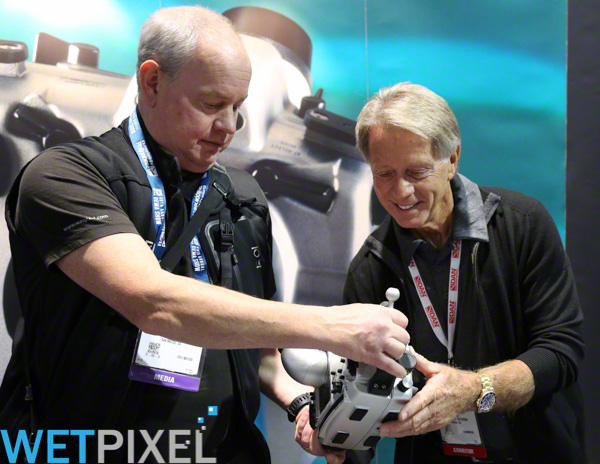
Seacam
Our first meeting of the DEMA show was with Harald Hordosch and Stephen Frink from Seacam.
We first took a look at the housing for the Nikon D500, a camera that is getting a lot of attention in the underwater world.
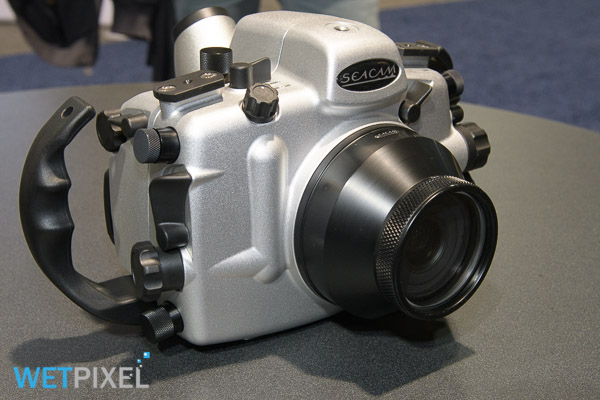
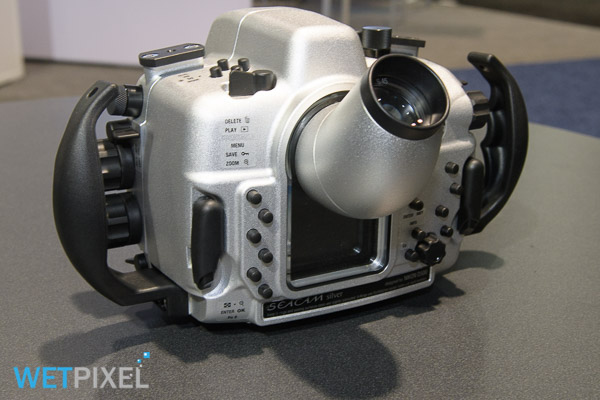
One of the most notable features is the switch on the right hand side of the camera that allows for adjustment of the ISO and AF via one control. with a simple up/down motion of the finger.
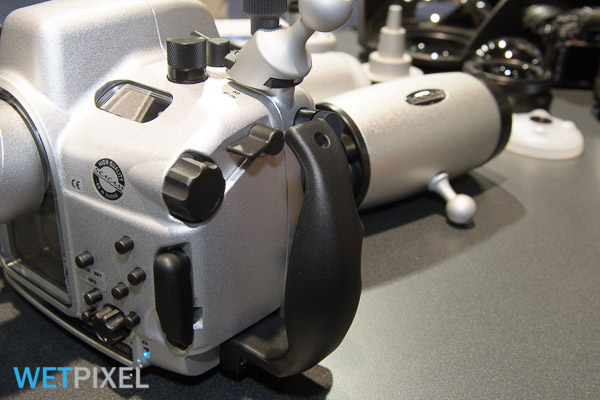
Pressing the lever down gives rear button autofocus, which pushing it up gives ISO adjustment

This feature is especially desirable as it allows for these adjustments without removing a hand from the camera handle or the photographer’s eye from the viewfinder. It also declutters the right hand control area.
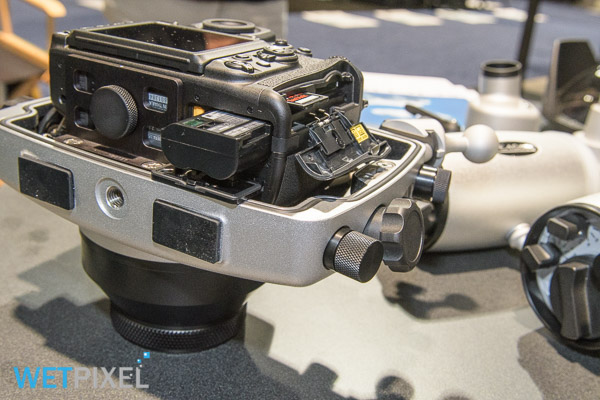
Another new feature of this housing is the clearance for the battery compartment and card slots that enables removal of both batteries and memory without detaching the camera from the housing.
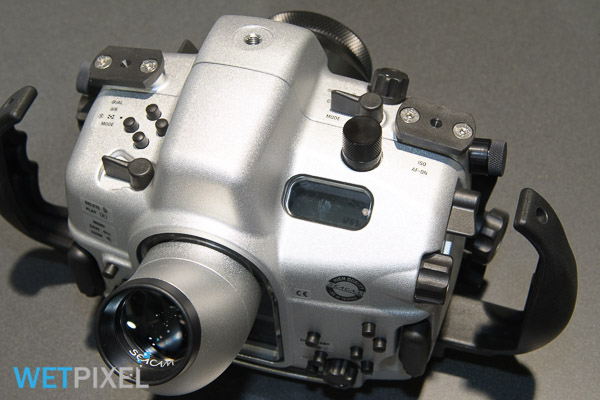
It is equipped with 4 ports for strobe triggering, vacuum leak detectors and other options.
Next we checked out the housing for the EOS 5D Mark IV. The camera is very similar to the 5D Mark III with small changes. Seacam clients who already own the 5D Mark III housing and have upgraded to the Mark IV camera can send in their housing to be realigned. It is important to note that housing that have been converted for use with the RD IV will no longer with the 5D Mark III or 5DS/5DSr cameras.
Seacam has also released a housing for the Nikon D5.
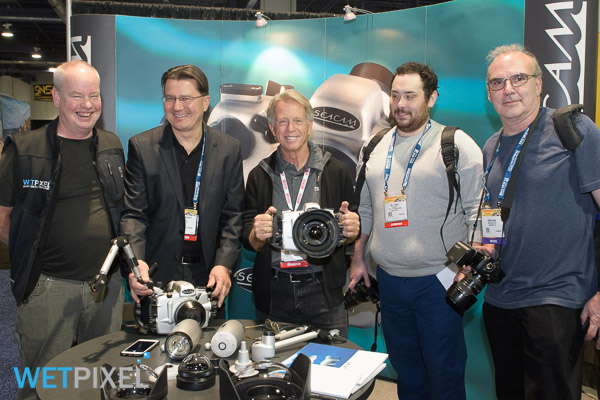
Aquatica
Our second stop of the day was with Aquatica’s Blake Stoughton.
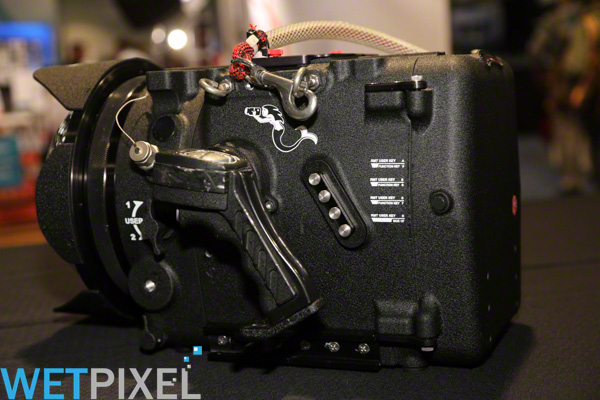
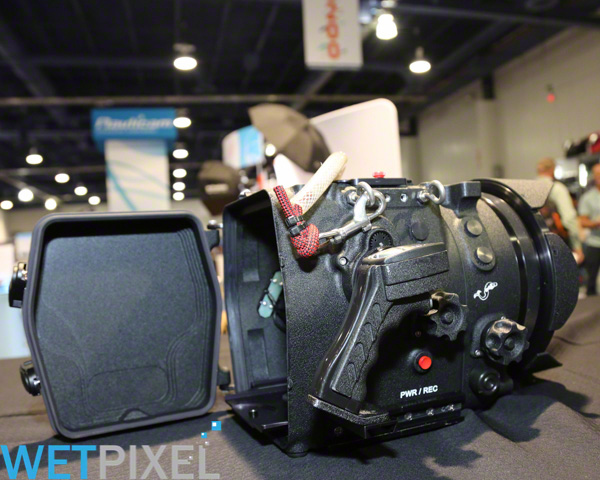
We first checked out the Rouge housing for the RED camera, which has a back that is now 3.5” smaller due to the monitor window being repositioned to the top of the housing. The housing is the same as that of the past, but Aquatica now offers a new 3-D printed saddle that allows it to also accommodate the Sony FS7 Mark II.
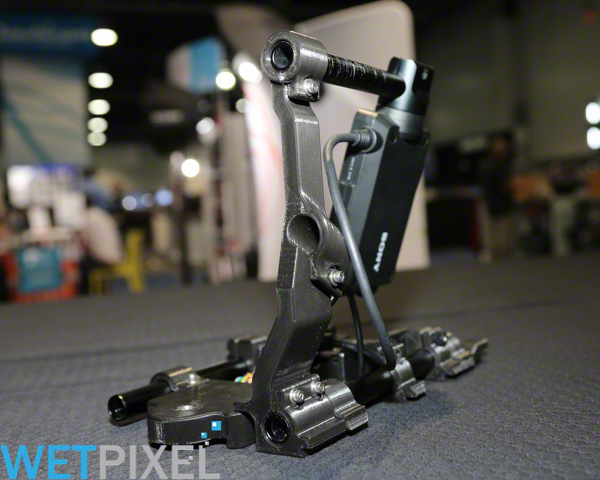
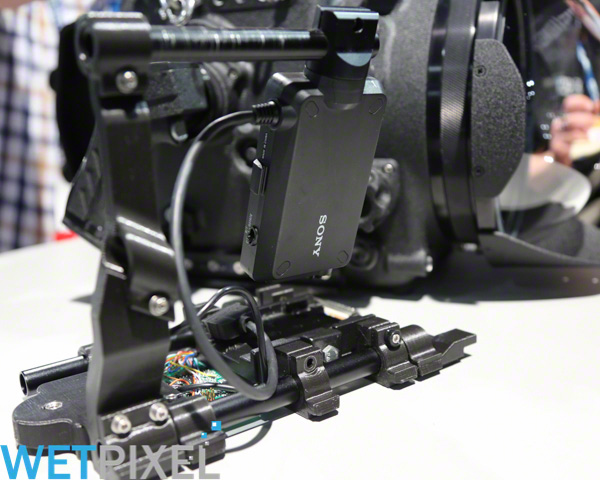
The housing will accommodate all the new RED cameras including the Helium and Raven cameras.
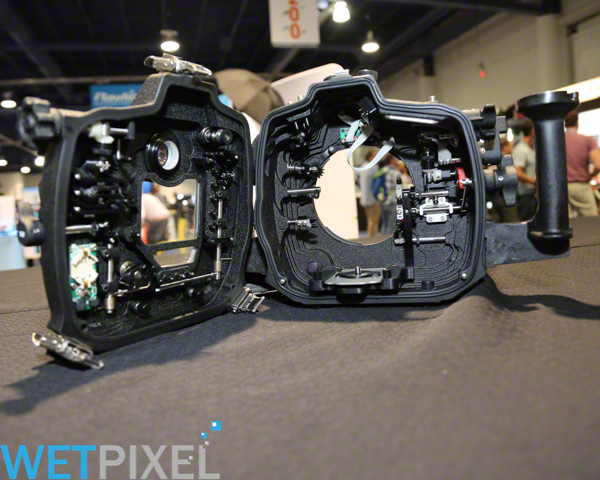
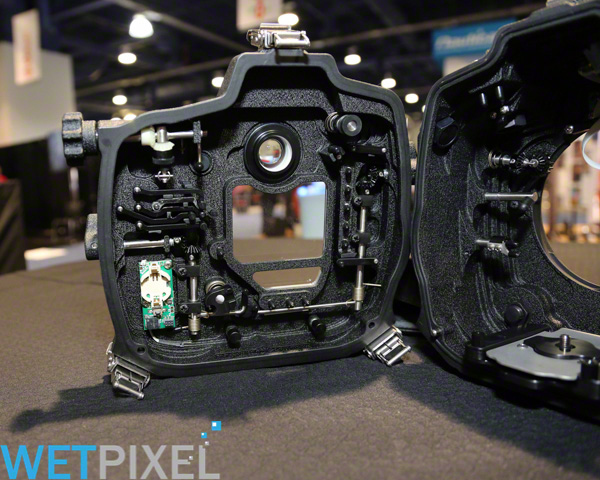
The second housing we checked out was the AD5 for the Nikon D5 camera. This housing just started shipping about a month ago. The housing has 3 buckle latches.
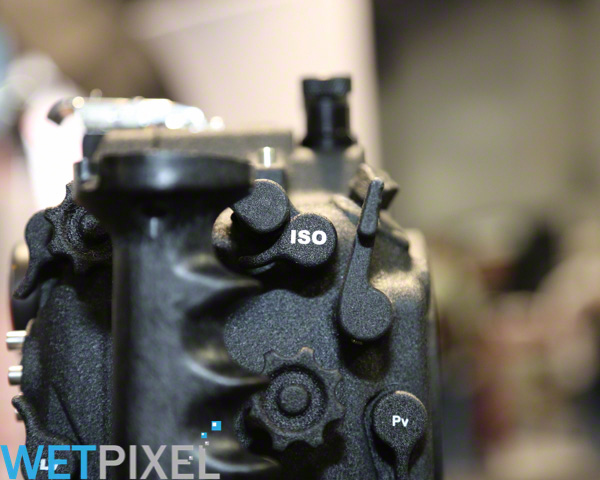
New changes to this housing include a new location for the ISO button and a new control layout. Leak detector circuitry is standard in these housings and customers will only need to purchase a vacuum bulk head valve to upgrade to the vacuum seal, which can easily be installed.
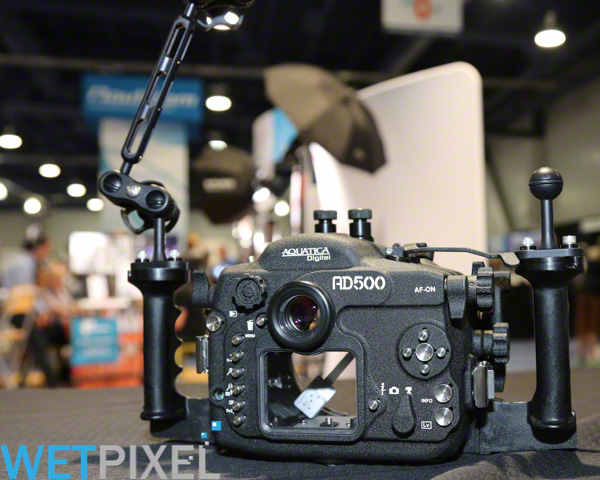
Next Blake walked us through the Nikon D500 housing, which is shipping now. One new and interesting solution to move the ISO closer to the hand held position was to extend the ISO button into a long lever.
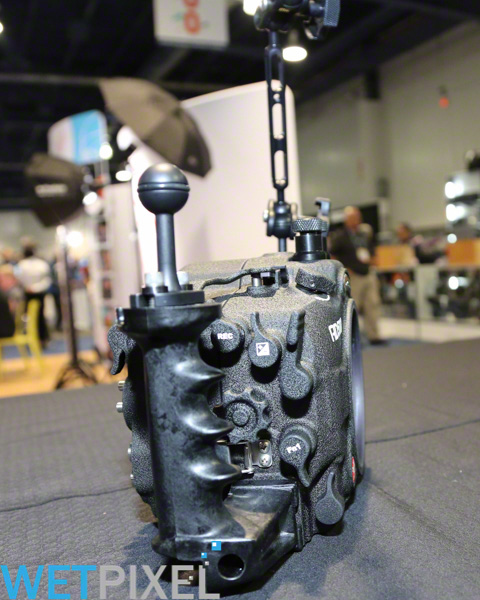
Next we checked out the Aquatica Canon 5D Mark IV housing, which also just started shipping.
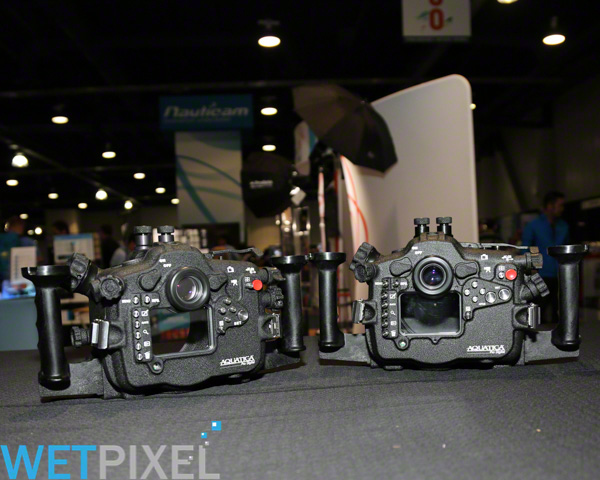
Differences in the new housing include that the ISO lever has been extended, the ergonomics of the control knob were adjusted by angling it, the set button was moved over and an AF area mode button was added. Due to the reduced re-tooling costs, Aquatica are able to offer the housing at $2,795.00.
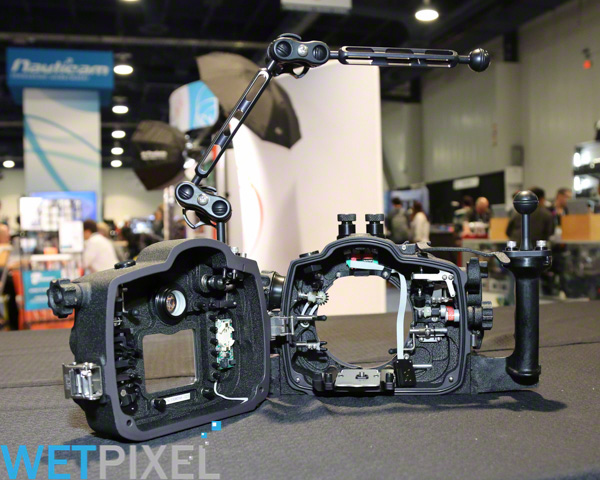
Since the camera is very similar to the Canon 5D Mark III, Aquatica will be offering an upgrade kit for owners of the Canon 5D Mark III housing that can be self installed and will not break a seal during installation.
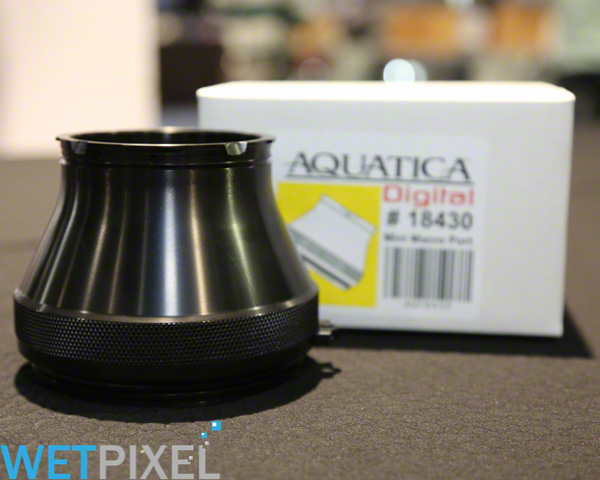
Aquatica has designed a new macro port, known as the slim macro port, for all macro lenses.
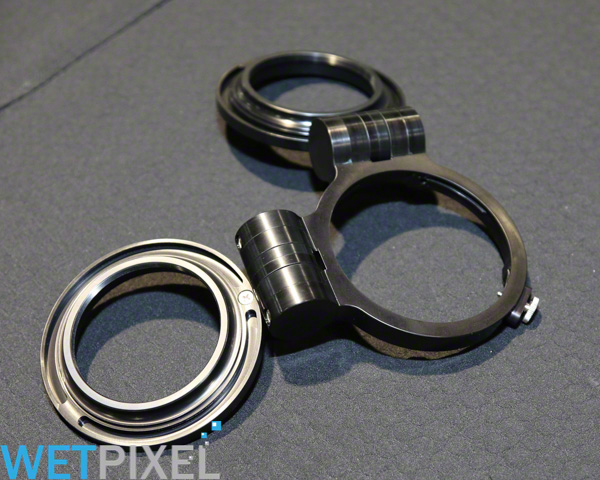
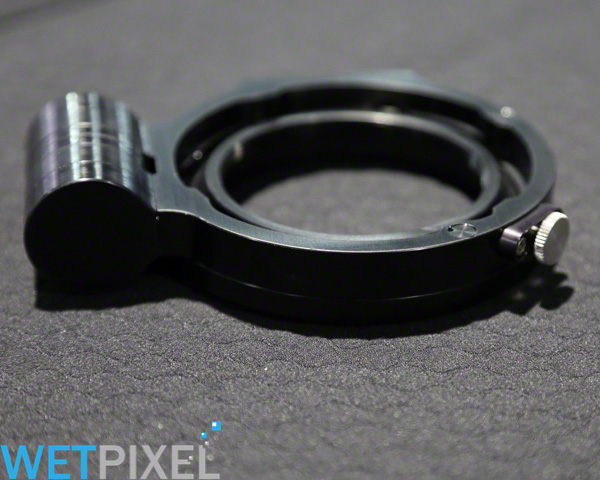
They also have a single and a dual flip diopter mount. The ring that mounts on the port is a step down ring that allows the diopter to be closer to the lens. The flip mounts attach to the port via a bayonet with a locking pin and have 67mm threads.
Additionally, all extension rings have been re-spun and include an external pin-lock.
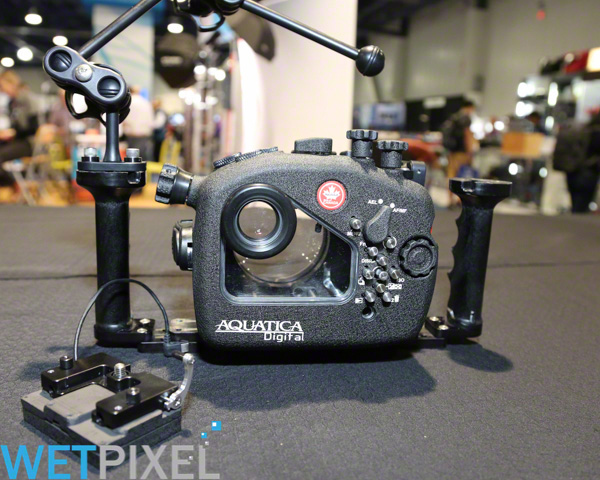
The housing for the Sony Alpha A6300 uses the existing camera saddle and allows for a magnetically attached extra battery pack that gives two-times the battery life.
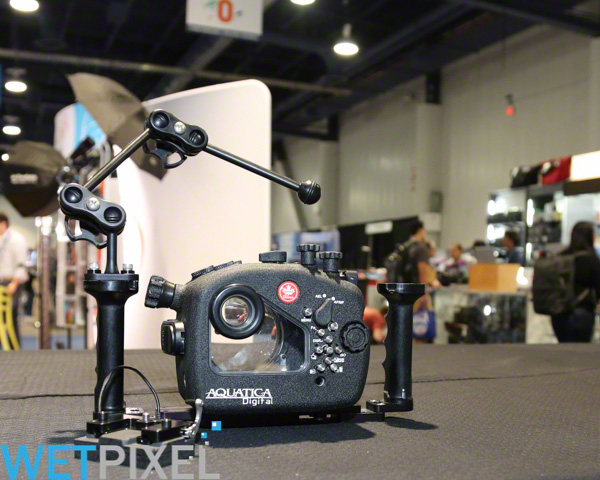
The camera tray slides into place magnetically and has spring-loaded bumpers on the housing back to keep it all in place. The housing has a price of $1650.
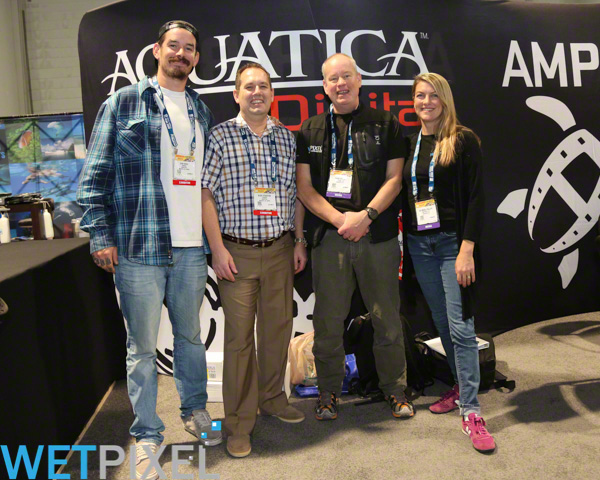
Ultralight Control Systems
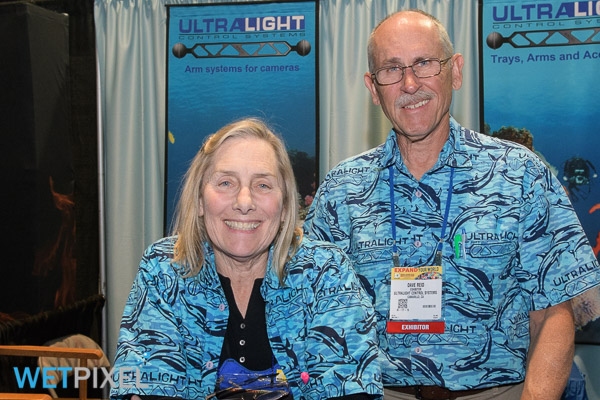
We visited Terry Schuller and Dave Reid on the Ultralight Control Systems (ULCS) booth. Well known to most people in the industry, ULCS make a wide variety of arms, clamps and attachment accessories, largely based around a 1” ball system. Terry and Dave showed us a new camera tray that they are producing to fit the Lenzo iPhone 6 housing.
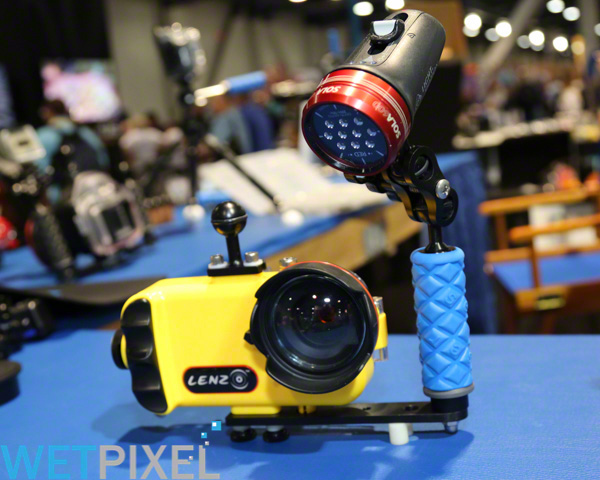
It can be fitted with a ULCS handle and there is also a special 1” ball attachment to allow the fitting of lights or other accessories. The tray will retail at $30.95, the handle is $49.95 and the ball mount $23.95.
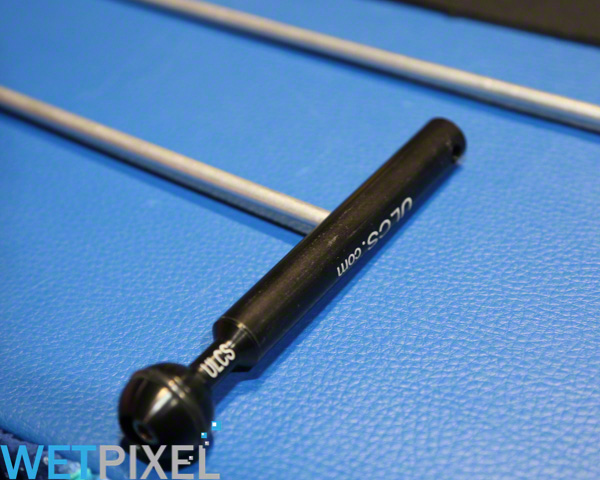
They also showed us an innovative approach to the muck stick. Called the T stick, these feature a T handle, which in turn has a 1/4” 20 thread so that it can be fitted with a ball mount or other accessories for mounting cameras etc.
It also has a hole for attaching a lanyard or split ring. It will retail at $20.50.
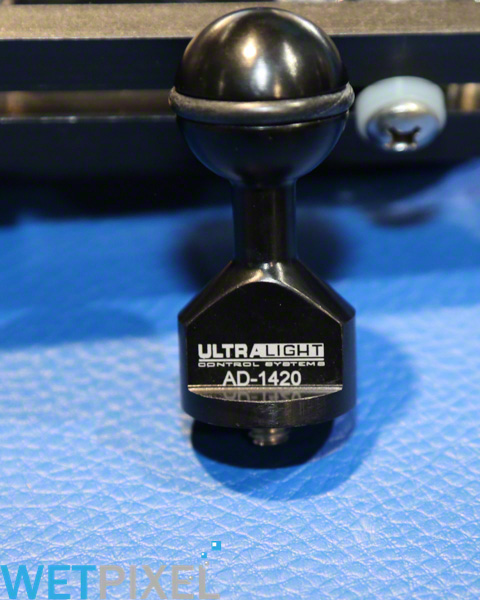
ULCS has invested in a new laser engraving machine which means that each item can be permanently marked the products code, allowing for them to be easily identified by the user.
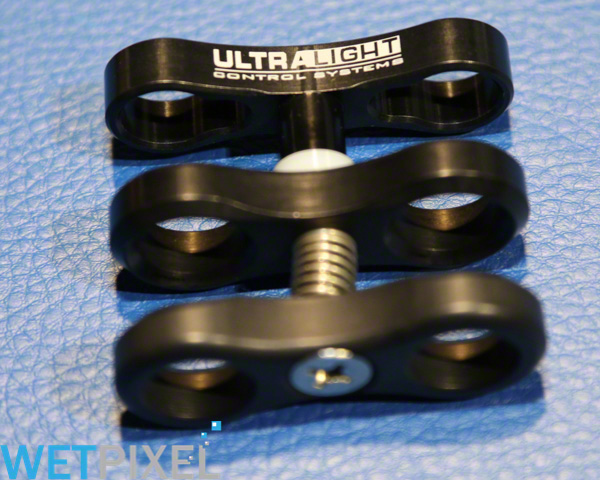
ULCS’s clamp with its 1/4” 28 thread that allows for precise tension adjustments and sporting the new laser engraving.
We chatted to Terry and Dave about their plans with the new GoPro HERO 5. Once the new dive housing is available, they plan to design a cage mount for it.
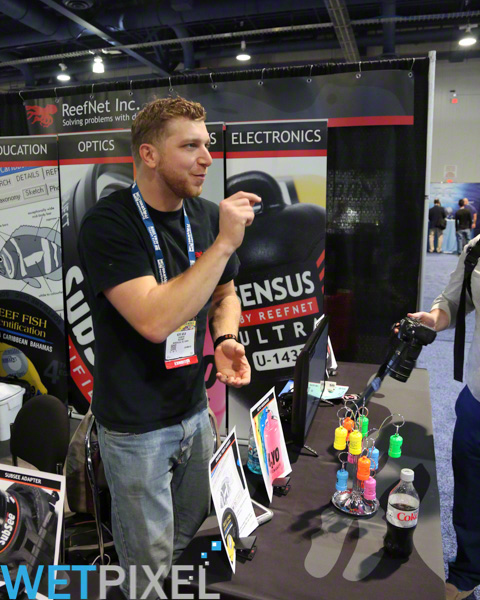

Nauticam
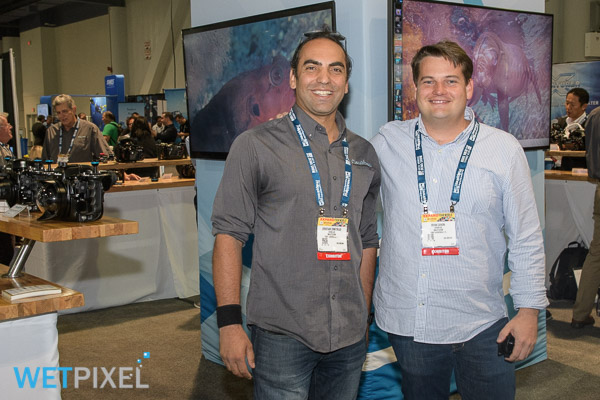
We then met with Ryan Canon on the Nauticam stand. As always, the company has a large number of models that have been launched since DEMA 2015.
Nauticam has been investing considerable time in evolving their engineering design process and using five axis 3D milling machines to remove extra metal, while retaining metal to ensure that their is enough strength. This has produced a slightly different look to many of the housings with more rounded corners as well as REDucing weight significantly.
Internally, many of the control arms have been drilled out to save weight

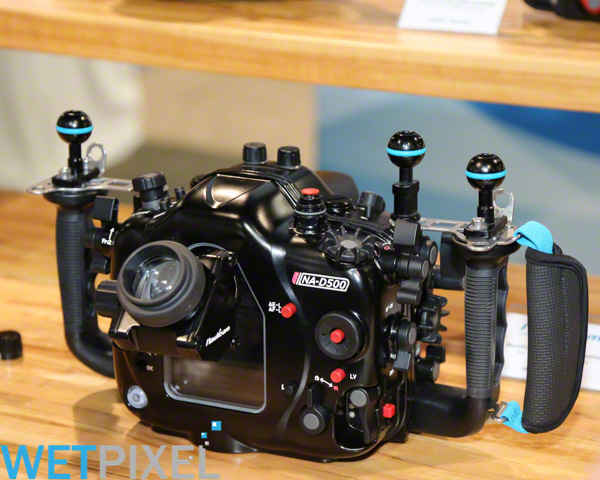
Their housing for the D500 shipped 4 weeks after the camera’s launch. Ryan stressed that in order to do so, Nauticam’s team had spent lots of time preparing the housing from CAD diagrams produced by analysing images of the new camera prior to its physical launch.
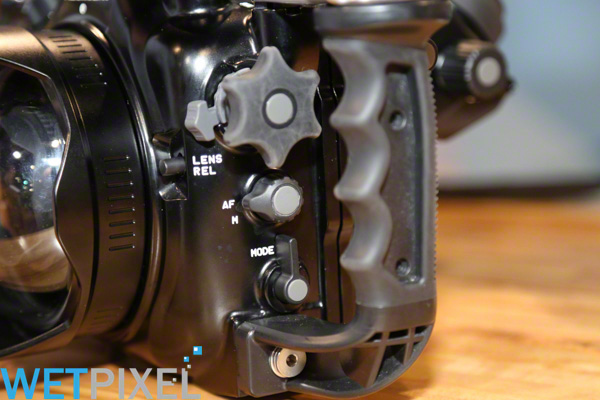
Ryan noted that the housing’s controls has been optimized in the light of the camera’s AF performance, with separate controls for MF/AF selection and focus mode/area selection.
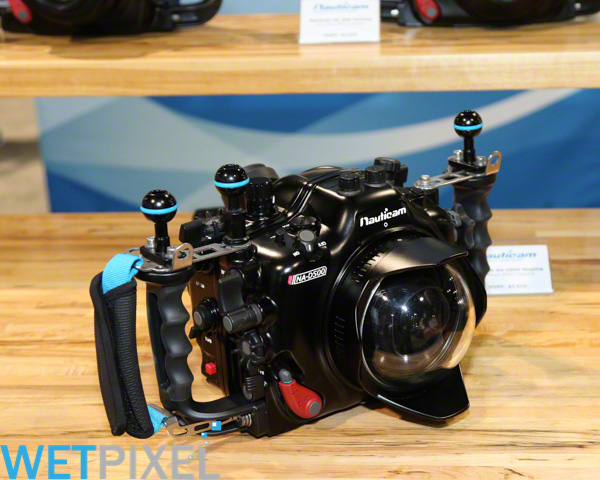
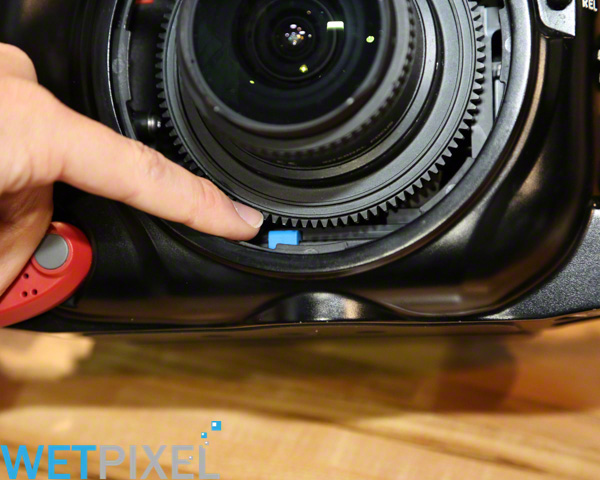
Other features include a lever on the right hand side for controlling ISO and a button on the camera saddle that allows the vacuum system to be reset after performing lens changes. The latter is a standard feature across the Nauticam SLR range.
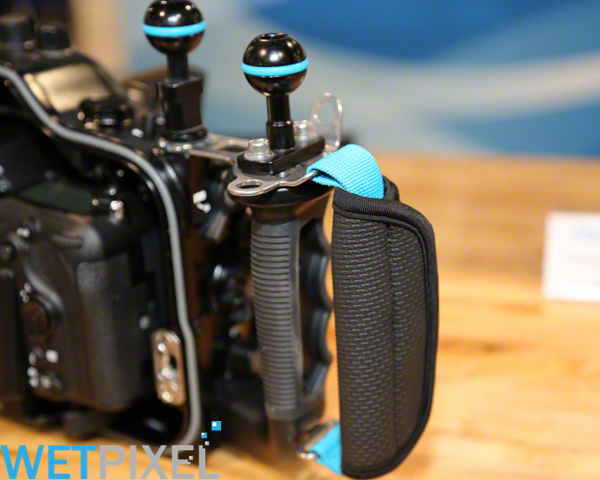
Attached to the D500 housing was an optional hand strap.

Nauticam’s housing for the Nikon D5 was also on their booth. It offers access to the cameras Fn1 and Fn2 buttons via a rocker lever on the left hand side, and to the Pre button via a small lever on the right.
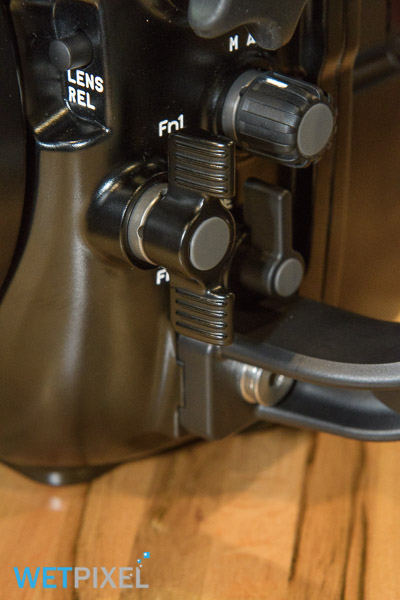
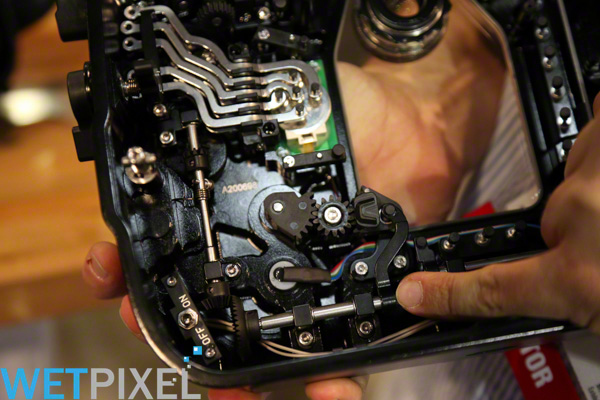
ISO control is vis another small lever on the right, and Ryan showed us how some of the controls have been remapped in order to improve the ergonomics.
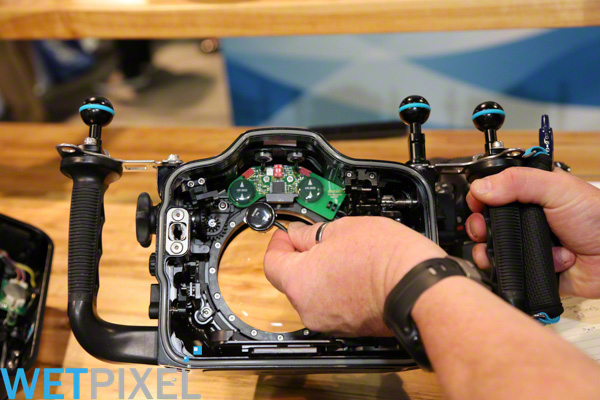
Both new housings are shipping with Nauticam’s electro optical manual converter as standard. This converts the electric hotshoe signal into an optical signal in the housings fibre bulkheads. It can also be used to produce an electric signal if the housing is equipped with suitable bulkheads.

There is also an optional TTL version available that can be fitted by the user if required. This will produce a TTL signal with Inon Z and D series strobes and the Sea&Sea YS-D2. It will be joined by a second version in January which will offer TTL output with the YS-250 and Ikelite DS161 strobes.
The TTL version offers camera control of strobes, including flash output adjustment and manual/TTL switching. It has also been designed to allow an electrical signal pass through it, even if there are no batteries installed or the board is damaged. If the housing is fitted with electrical bulkheads, the strobes will still fire.
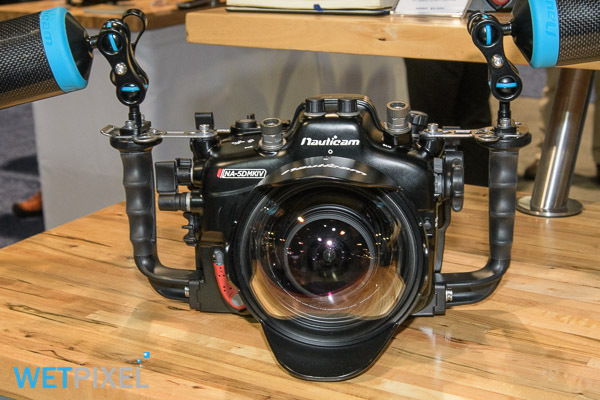
We then had a look at Nauticam’s housing for the Canon 5D Mark IV. Ryan stressed how good the Dual Pixel AF system is for video shooters.
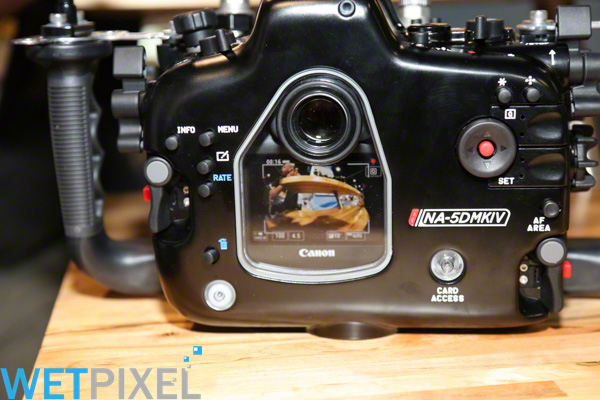
The housing allows the user to view the card access light, effectively showing that the camera is (or isn’t) recording. ISO and flash output are on a two way rocker lever on the right hand.
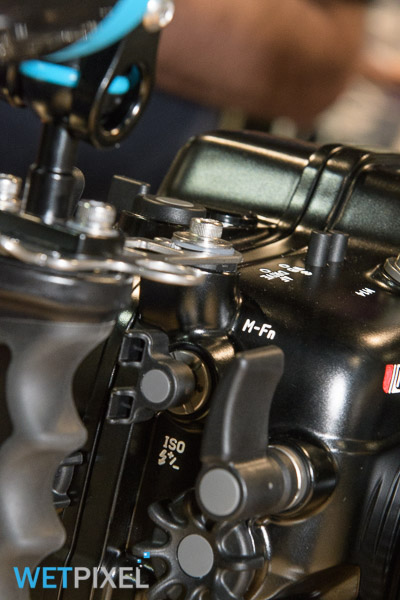
The housing optionally utilises Nauticam’s hotshoe mounted TTL optical converter. This is, in effect, a micro flash and can also use flash modes like second curtail sync.
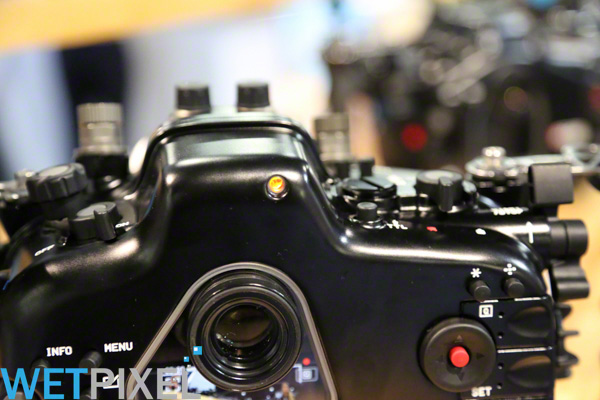
The housing has an on/off button for the converter and a visible indicator light that illuminates when it is powered up. For those that chose not to use the converter, the housing is also equipped with two Nikonos electrical bulkheads as standard.
Nauticam are offering an upgrade path for existing 5D Mark III housing owners. This actually requires the replacement of 12 components so needs to be carried out by authorized service centers.
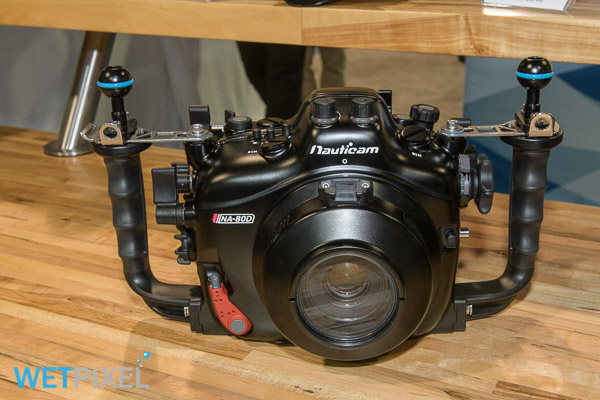
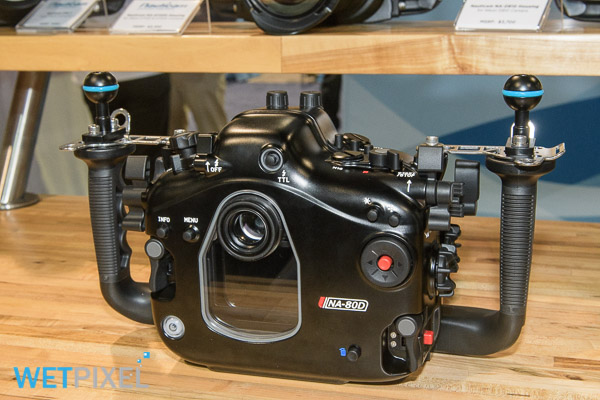
The housing for the Canon 8D0 also features the on/off control button and indicator light for the optional TTL converter.
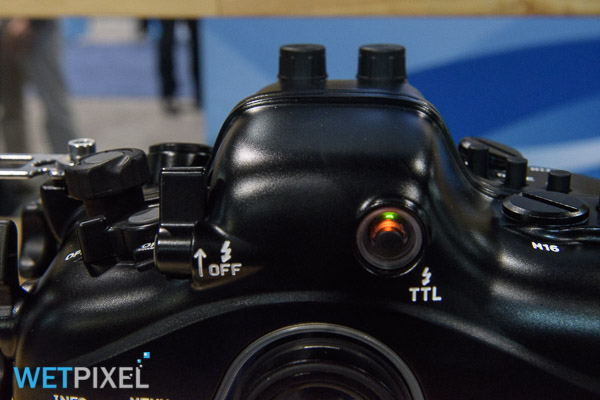
It is also supplied with electrical bulkheads as standard. As it also features the Dual Pixel AF, the camera makes for a good option for underwater use.
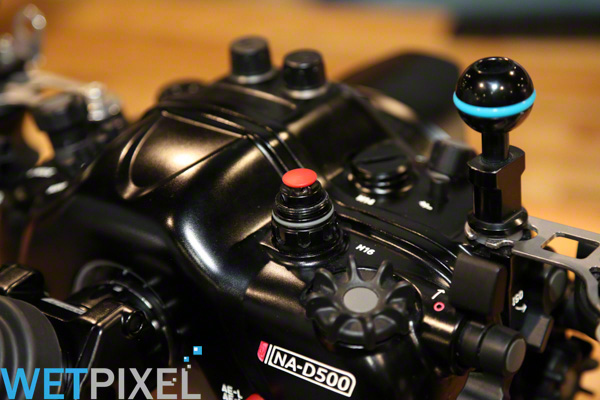
Nauticam has redesigned their bulkhead for the vacuum leak detector. The new push button version is simple and easy to use.
Nauticam dealers worldwide are offering a special offer between now and the end of 2016. All SLR housings purchased 9n this time frame will be supplied with a hand strap and vacuum bulkhead free of charge.
Nauticam has been working on a series of wide angle optical options for SLR cameras with a stated aim of “making dome ports obsolete”. Although still very much under development, the general idea is that there are likely to be two water contact wide angle conversion lenses and 3 wide angle conversion lenses.
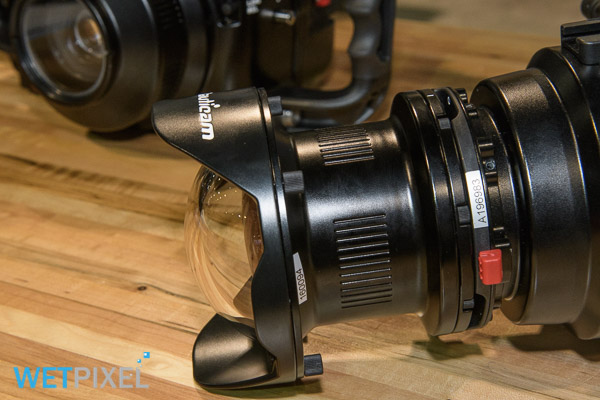
On their booth, they were showing an early prototype of one of these, which effectively converts the Nikon 60mm f2.8 macro into a close focus wide angle lens.
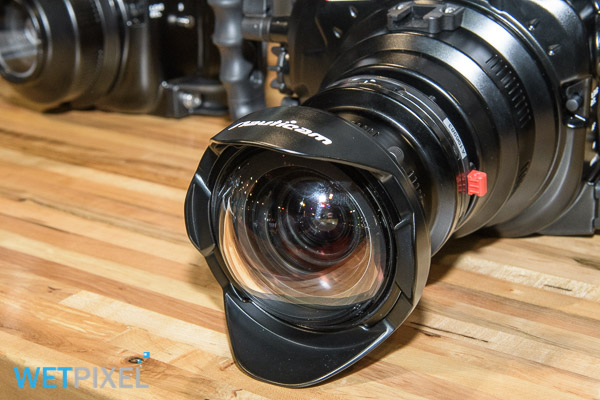
Ryan was at pains to stress that this and the other optics mentioned above are being tested and prototyped at presents, so is impossible to provide any accurate indication of when they might ship. Designing optics requires very time consuming computer simulations and even then, sometimes the prototypes these produce do not always works as designed.
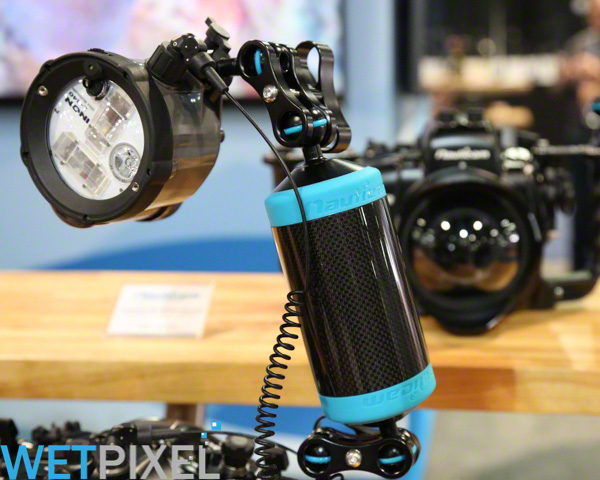
A new product that is shipping now are float arms. These are made of aluminium tube, with welded balls and overlaid with carbon fiber reinforcement. Nauticam are offering a lifetime guarantee against water ingress with these.
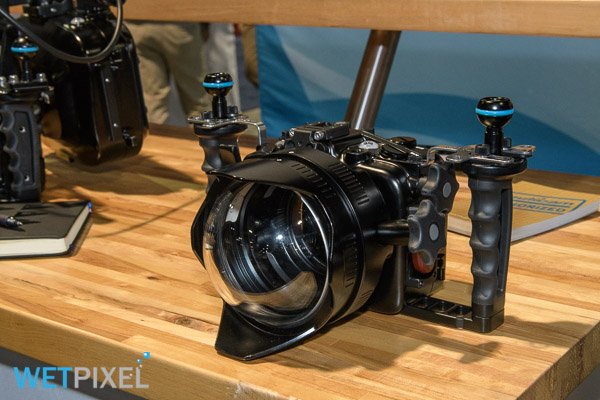
Moving on to mirrorless cameras, Ryan showed us their housing for the Sony a6500. In common with the housings for the EM-1, GH4 and A7 II, this is supplied with attached handles and a “paddle” shutter release, similar to those found on SLR housings.
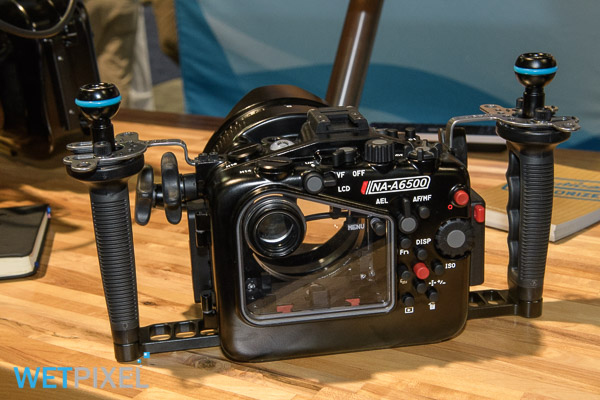
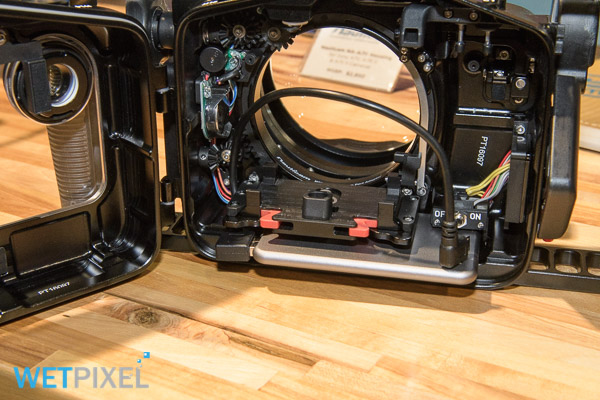
The housing is supplied with a battery pack that slots in under the tray, extending the camera’s longevity by around 2 times that of the camera battery. Nauticam expects to be shipping the housing within two weeks of the camera.
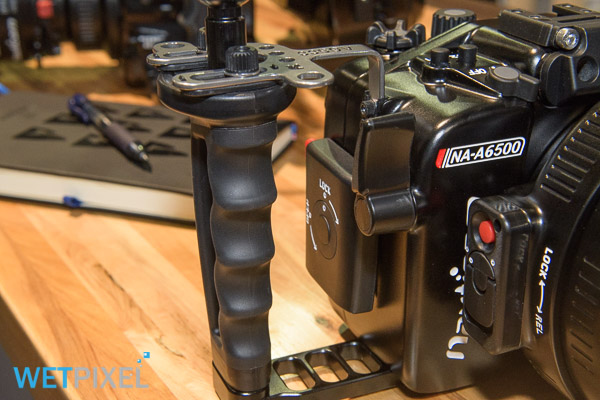
We also saw Nauticam’s housings for the Panasonic GX8 and GX85 (also known as the GX80 or GX7 Mark II depending on the market).

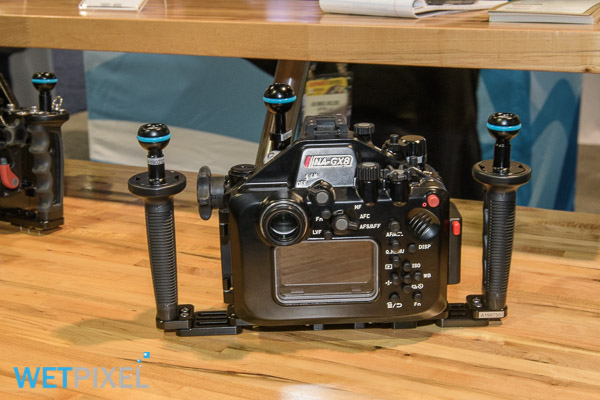
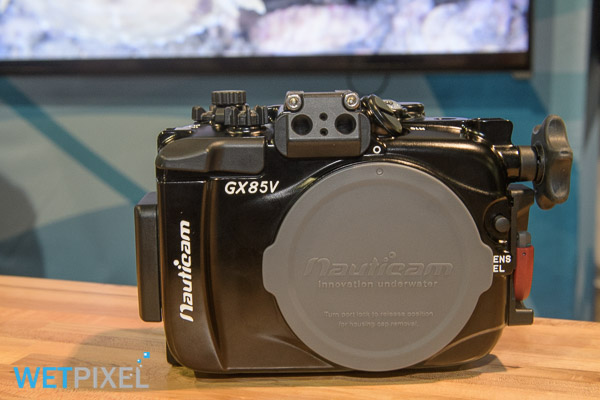
In terms of compact camera housings, they are no supplied with a shutter release extension and stainless steel stabilizer brackets. Hence, if the user wishes to use a camera tray, these parts are already available.
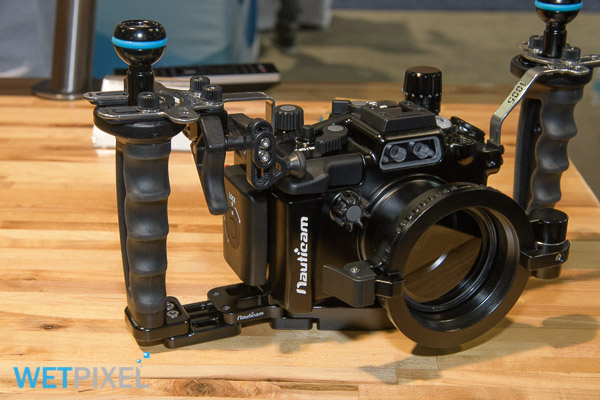

Ryan showed us the housing for the Sony RX100 Mark V. This is shipping now. Nauticam are also offering an service center fitted upgrade kit for existing RX100 IV housing owners.

New since last DEMA is their housing for the Canon G7X Mark II.
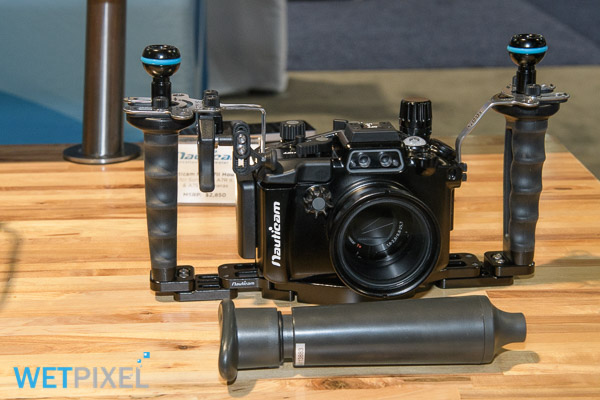
Nauticam dealers are now offering a package for compact cameras consisting of a vacuum bulkhead and pump as well as a tray.
Returning briefly to optics, Ryan showed the Compact Macro Converter (CMC) 2. This offers the same image quality, but with less magnification compared to the original CMC. This now gives a variety of options.
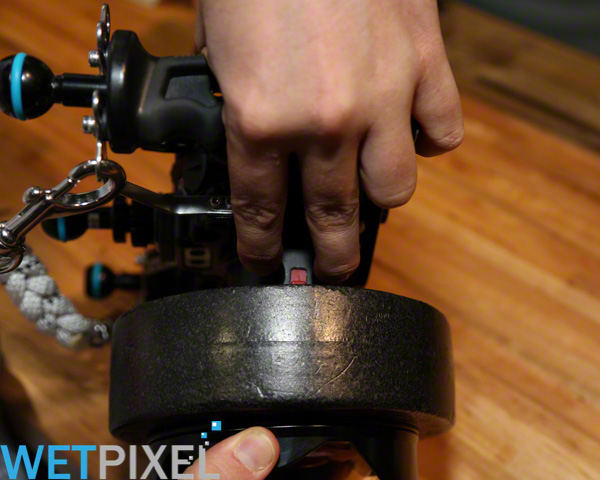
We also saw the buoyancy collar and its T handle extension for the WWL-1 wet wide angle conversion lens. The lens offers a great deal of versatility, as it can potentially replace a series of lens (with mirrorless cameras) and be changed underwater, giving a variety of shooting options.
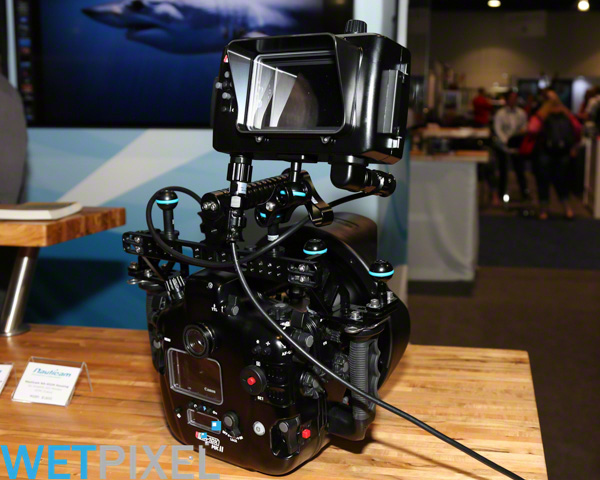
Moving toward video housings, Ryan showed us a the housing for the EOS IDX Mark II. Again featuring the Dual Pixel AF technology, this allows the user to pull focus smoothly and to do de defocused reveals, almost automatically. For still shooting, the housing can be used with the TTL optical converter and has been equipped with the on/off button and status light as on the 5D Mark IV housing.
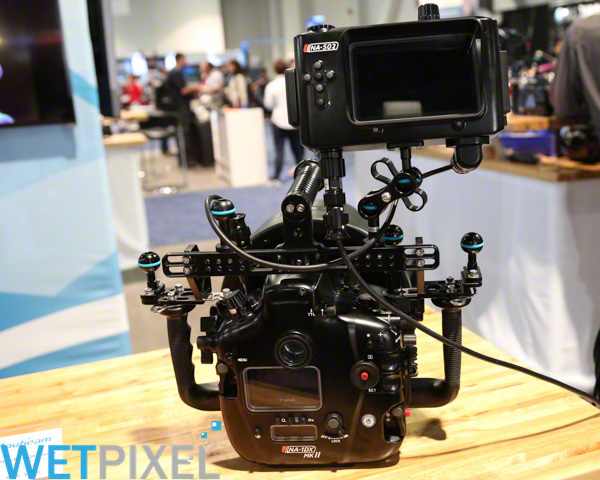
It was being displayed with the housing for SmallHD 520 external monitor and a grab bar for handling the housing at the surface.
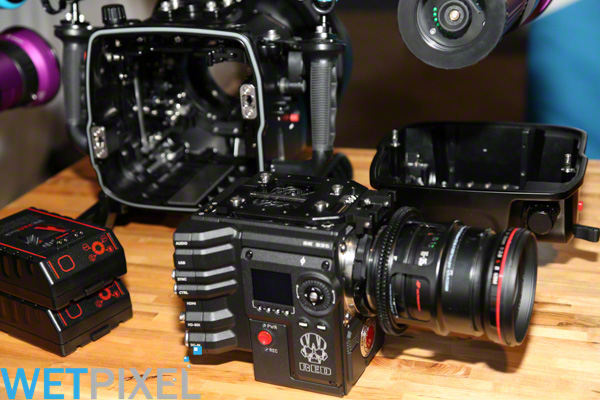
Nauticam has expanded its range of housings for RED cameras with the Weapon LT. These housings are designed for the Weapon 8K Helium and the Epic-W 8K. The former offers 60fps compared to the latter at 30fps, however, they both have great low light capabilities and there is a $30Kn price difference between them.
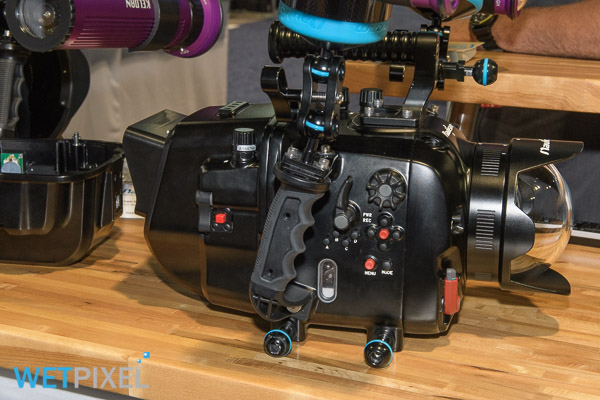
In common with the the Epic LT housing, these are both designed to be super portable (they will fit in a carry-on bag) and quick and easy to align and assemble. The only tool required to a single allan key that is actually attached to the camera mounting saddle. Cristian Dimitrius, who has used the housing extensively in the field, can assemble the housing in under 10 minutes.
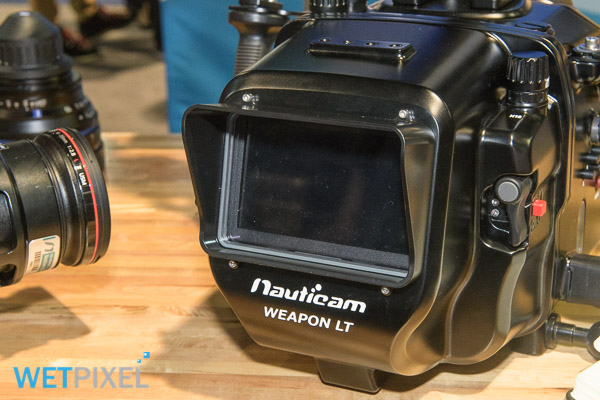
Nauticam are offering a monitor back for the housing which accepts the RED Touch 4.7’ monitor or an external housing for the RED Touch 7” monitor.

The housing will accept power solutions from many vendors, including RED Brick and Pag options.
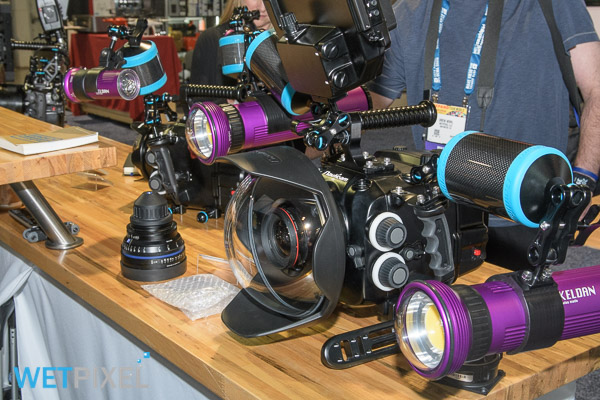
As standard these housing are compatible with SLR camera lenses, but Nauticam are making a converter which will allow them to be used with PL mount.
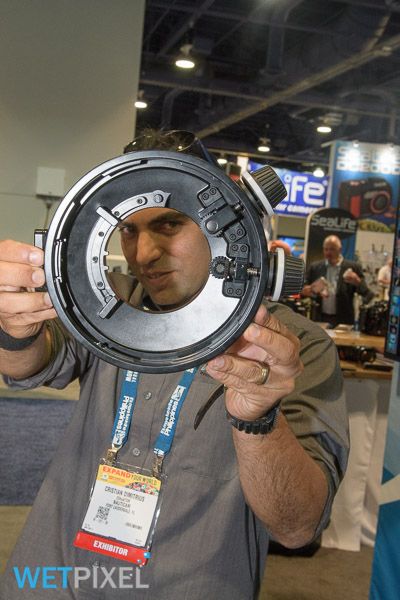
It is currently available for Zeiss Ultra Prime lenses, other options will be available in future. It works with the N200 dome that was originally made for the Epic Cinema housings.
- Introduction.
- Booth Visits: Seacam, Aquatica, ULCS and Nauticam.
- Booth Visits: XIT404, SAGA, Vivid Pix, Lights and Motion, Subal and Ikelite.
- Wetpixel/DivePhotoGuide underwater imaging party.
- Booth Visits: CineBags, Isotta, Acquapazza, iDivesite, Backscatter